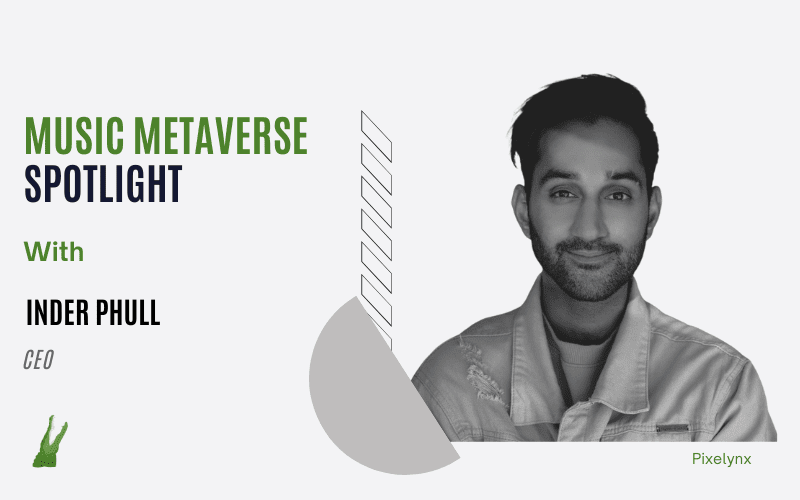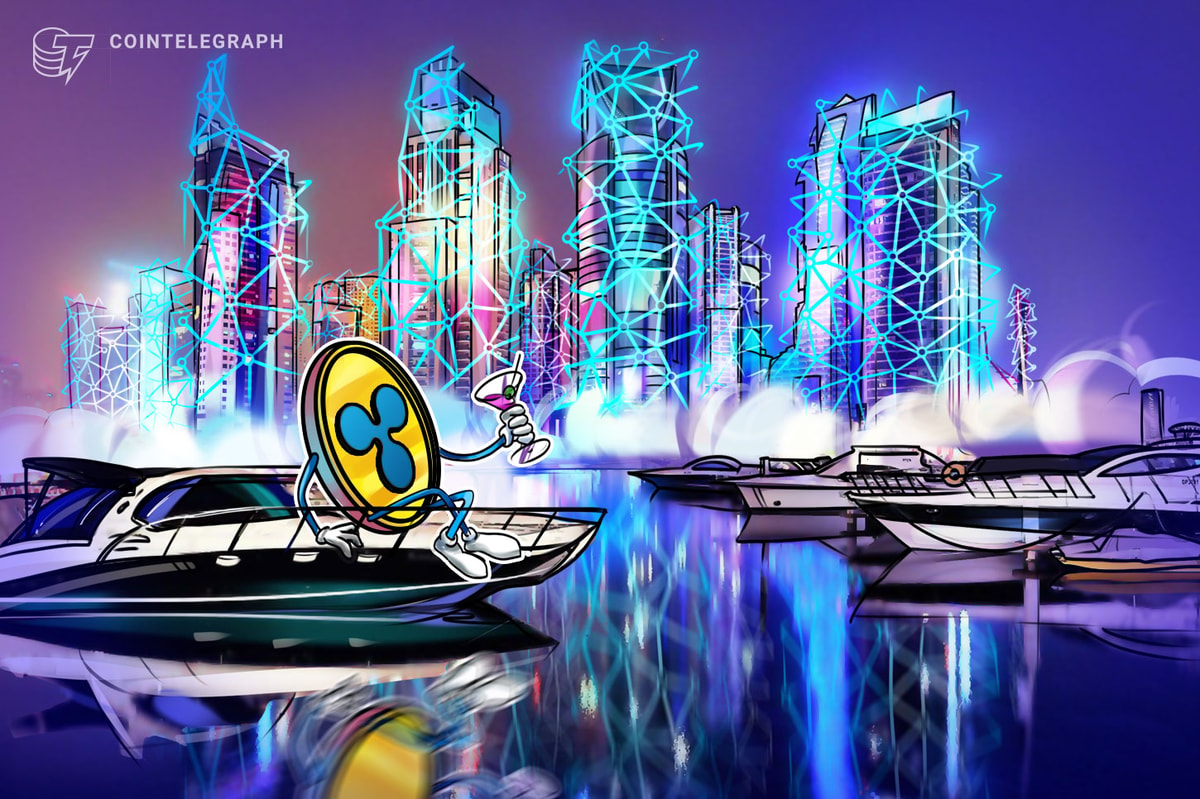While pop, rap and EDM artists are dipping their toes into the Web3 world through launching NFT collections, virtual concerts on metaverse platforms, and phygital offerings, Canadian electronic music producers and DJs Richie Hawtin and deadmau5 are taking it up a notch by co-founding a music metaverse gaming venture with entrepreneur, Inder Phull.
Named Pixelynx, the platform sits at the intersection of music, AI, gaming, and blockchain, with an aim to transform the way music artists engage with their fans through gaming. To achieve that, Pixelynx is developing its first augmented reality Web3 game dubbed Elynxir.
Yet to be launched publicly, Elynxir uses the same underlying technology as Pokémon Go, and fans can explore the game’s virtual world in order to collect music, digital collectibles, and other rewards. On top of that, fans can build their own content using the items they collect and share these creations for others to explore.
As Pixelynx gears up for the launch of Elynxir in the coming months, we speak to the venture’s CEO Inder Phull to find out more about how the Web3 space and blockchain gaming have the potential to transform the music industry.
Please tell us about yourself and the story behind Pixelynx.
I’ve always considered myself a creative and entrepreneur, and began producing music at a very young age. I remember saving up money on my 14th birthday to buy DJ equipment and got completely obsessed with how the artistry and technology of the music industry was evolving. I launched my first business whilst I was in university and very quickly started working with major brands like Lacoste and Disney. I was still young at this point and was forming a very deep interest in the convergence of different sectors in the entertainment industry– specifically music, AI, gaming, and blockchain. I spent a few years refining a business plan that went through multiple iterations with my partners and co-founders.
What piqued your interest in the blockchain space and where did you first hear about it?
I always had an interest in blockchain tech at an intellectual level and had been researching the use of blockchain to transform how music royalties are paid. The underlying concepts and technology seemed so powerful that it was clear that blockchain and decentralisation will be transformative. I was around 24 years old (8 years ago) when I started researching how it could impact the music industry and produced content reflecting on potential use cases. The technology was not scalable at this point and it was a more academic process than a practical one.
How did you meet deadmau5 and Richie Hawtin and what sparked the idea to start Pixelynx?
At 25 while I was running my other company, which helped brands enter music and engage with youth culture, I had won the IMS Visionaries Award. It aimed to spotlight future leaders in the music industry and that platform really kickstarted everything as I look back many years later. It was through IMS and Ben Turner that I was able to meet Richie Hawtin, Dean Wilson and Joel Zimmerman (aka deadmau5).
I was always obsessed with both Richie and Joels ability to seamlessly move between music, technology, interactive formats and innovation. They were the real visionaries and I was low-key obsessed with both of them. I knew a lot of the core ideas would resonate as both artists had already been actively developing similar experiences and platforms over their careers.
Apart from the fact that Pixelynx is co-founded by electronic/techno music industry veterans, why is the platform particularly focused on that genre especially when its audience is not as big as that of pop music?
The metaverse is for everyone. PIXELYNX is genre agnostic with genre classifications, however, we found that electronic music and hip-hop tend to be earlier adopters. We don’t want to decide which genres we focus on, the aim is to create an open platform where artists from all genres can build incredible experiences with and for their fans.
How much are deadmau5 and Richie Hawtin involved in the decision-making process in the company and how are they using their experience in the electronic music scene to contribute to the development of Pixelynx and Elynxir?
Both artists play an important role in shaping the company’s vision and game design. They have been at the forefront of innovation for decades, constantly reinventing themselves and the music industry in turn. Whether it’s the evolution of vinyl to MP3s or integrating the Unreal Engine into a live DJ set. Both artists have been doing this and so much more before it was in the mainstream. It’s important to note that although to most of the outside world they are considered musicians, they are also technologists and entrepreneurs.
Please tell us more about the platform’s interactive physical and digital experiences and how they enable artists to engage with fans through gaming.
We’ve partnered with Niantic (makers of Pokémon Go) to build on their Lightship ARDK. This means we can create location-specific quests, treasure hunts, and experiences that will resonate with specific regions as well as fans so artists can also be quite precise by growing communities in a more personal and targeted way. Artists could reward fans that are creating the best content in each region and give them exclusive perks for helping grow their presence or even ask them to join their virtual team and participate in a much more collaborative way.
The convergence of music and gaming will unlock some incredible new opportunities for the music industry to evolve. Fans will have the opportunity to be collectors, collaborators, influencers, and investors. The aim is to nurture these new relationships between the artist and fan.
Which blockchain will Elynxir be built on?
Polygon. However, we’re building cross-chain functionality.
Soundblocks, one of the UGC tools in Elynxir, allows users to collect stems to create music. Other decentralised music platforms are also releasing stems for people to collaborate and connect with artists and make music NFTs. Do you think this could become a niche in the Web3 space and why?
Stem files are like the Lego bricks of a song. They have always been there but until now only a limited group of creators that understand music software can really engage with them in interesting new ways. We believe that music has more potential than static audio. Music can be more dynamic, interactive and personalised. Building our infrastructure and gameplay around stems is part of a long-term vision to create better standards for how new formats could be distributed. I believe stems are a key part of this future.
How will blockchain gaming, NFTs and Web3 disrupt the electronic music industry?
Electronic music is a futuristic genre that is always the first to adopt new technology. This isn’t about electronic music. The convergence of Web3, gaming, and AI has the potential to transform the whole music industry, not any one genre. We will see new distribution channels start to appear (like TikTok) that will give fans the ability to create UGC that looks like it could be produced by a large team. The evolution of this is fascinating. Last year, we launched a music video with deadmau5 where fans were given 3D assets and challenged with sharing their own virtual scenes that would form part of a video.
The song is called “When The Summer Dies” and has millions of views. It’s a great example of how artists can build new relationships with their fans and bring them into the process of building their world. Ultimately, I believe this will create a new category of music experience and grow the size of the music industry considerably.
What are the most challenging aspects of your role at Pixelynx and how do you overcome these challenges?
No business is easy, especially if you are on the cutting edge of new technology and innovation. The rights landscape in the music industry is a major challenge. It is incredibly fragmented and complex to navigate. The music industry is built on a number of outdated business models that do not work at scale when you start to think about Web3, gaming and new forms of distribution.
We’ve built a world-class team including our advisor, Dina LaPolt, who is one of the most influential music rights advocates in the world. She has been instrumental in shaping the landscape around music rights. Another challenge is finding balance in life when you are so obsessed with your work. I think many entrepreneurs can resonate with the latter.
What’s in the pipeline for Pixelynx this year and when will Elynxir be available to the public?
PIXELYNX’s debut mobile game, ELYNXIR, was recently launched as a private test in October at Amsterdam Dance Event with Spinnin’ Records (one of the largest electronic music labels in the world that is part of the Warner Music family). We will be releasing new features and opening it out to the public over the next few months. There is also some huge news that you will see in the next few weeks between PIXELYNX and one of the most influential organisations in the space.
How does Elynxir plan to scale in the next few years?
There are so many avenues we will explore but ultimately the aim is to build a gaming ecosystem around the music industry that caters to millions of fans and artists. The infrastructure we build is powered by Web3 tools and we will continue to build products across the full stack. I see ELYNXIR as a platform that will lead to new formats of music consumption. Formats experiences that can be created by artists, fans or both. User-generated content is a key focus area.
Where do you think we could see blockchain gaming in the near future?
The ecosystem is just forming and billions of dollars have been invested into the space but games can take years to build. Over the next few years, we will see the fundamental infrastructure taking shape that will allow developers to build Web3-enabled products more effectively. Adoption will continue to grow as traditional brands launch their Web3 strategies (Starbucks, Reddit and Nike are all playing a key role and making a significant impact).
In a few years “blockchain gaming” won’t even be used as a term, the technology will disappear into the background and it will just become part of the fabric of most products. Technology aside, the biggest unknown is regulation. Regulatory policy is always years behind innovation and there is a lot of work to be done here. We’re actively in discussions with a number of government organisations to help shape the discussion and provide a new context that will allow innovation to thrive.
Stay up to date:
Read More: news.google.com









 Bitcoin
Bitcoin  Ethereum
Ethereum  Tether
Tether  XRP
XRP  Solana
Solana  USDC
USDC  Cardano
Cardano  Dogecoin
Dogecoin  TRON
TRON  Lido Staked Ether
Lido Staked Ether  Pi Network
Pi Network  Lombard Staked BTC
Lombard Staked BTC  Wrapped Bitcoin
Wrapped Bitcoin  LEO Token
LEO Token  Chainlink
Chainlink  USDS
USDS  Hedera
Hedera  Stellar
Stellar  Wrapped stETH
Wrapped stETH  Avalanche
Avalanche  Shiba Inu
Shiba Inu  Sui
Sui  Litecoin
Litecoin  Toncoin
Toncoin  Bitcoin Cash
Bitcoin Cash  MANTRA
MANTRA  Polkadot
Polkadot  Ethena USDe
Ethena USDe  WETH
WETH  Binance Bridged USDT (BNB Smart Chain)
Binance Bridged USDT (BNB Smart Chain)  Bitget Token
Bitget Token  Hyperliquid
Hyperliquid  WhiteBIT Coin
WhiteBIT Coin  Monero
Monero  Wrapped eETH
Wrapped eETH  Uniswap
Uniswap  sUSDS
sUSDS  Dai
Dai  Aptos
Aptos  NEAR Protocol
NEAR Protocol  Pepe
Pepe  Ondo
Ondo  Ethereum Classic
Ethereum Classic  Internet Computer
Internet Computer  Aave
Aave  Mantle
Mantle  Coinbase Wrapped BTC
Coinbase Wrapped BTC  OKB
OKB  Gate
Gate